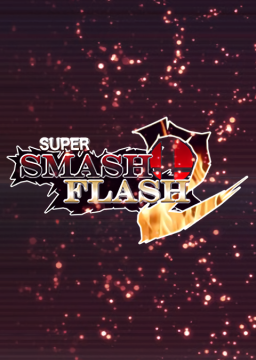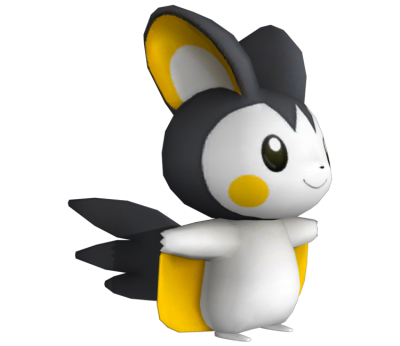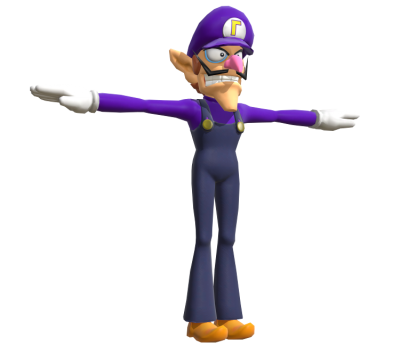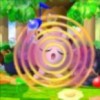weither you simply want to become a competitive pro and beat anyone online or in online tournaments (yes there ssf2 tournaments, i was surprised as well don't worry) or you want to become a pro and speedrun the game ''minigames'' this guide is for you! So we'Il split this guide into sections for easier understand and simply more ease up reading. 1: Introduction 2: Competitive Guide 3: Competitives Extensions 4: Speedrunning Guide So let's get started. INTRODUCTION
weither it's competitive or speedrunning (Or both!) both require lot's of pratice and understanding of the game mechanics so let's introduce you guys to the basic. MECHANICS
Some of the simpler mechanics can be learned by simply playing, such as walking dashing jumping etc. but we'Il list some of them here because you guys might have some problems. to short hop, lightly tap the jump button accordingly to your setup. to full hop hold the jump button for a bit. to double jump tap twice the jump button. BUFFERING
Buffering a move is inputing a move before a animation is finished so that the move come out as soon as possible. example, Jump and imediatly input neutral air (Nair for short) if done correctly the neutral air should come as soon as the jump animation is about to end. some characters can do two aerials in one short hop if you buffer the said aerials before. buffering is important, but that doesn't mean you have to ALWAY buffer an aerial, in some situation jump and delaying VERY slightly a attack is better. more details on it later. Buffered Aerials combo are frequent and combined with fast falling as soon as possible it can sometimes lead to very damaging combos. a good example is kirby. foward air buffered down air up tilt regrab down throw is a combo that isn't possible without buffering down air. and it deal some gud damage. DASH CANCELS
Dash canceling is simply canceling your dash into well anything to do so, dash then input shield or an attack. if you input shield it become ''shield dashing'' (atleast if you dash around and cancel it into shield repeatly) this is a decent option to aproach since if you dash and input shield sometimes you can make your opponents choose a option early but since they hit your shield you can punish it (Or dodge and reset neutral if needed) . dash dancing is repeatly canceling dash into another dash in the opposite direction (just quickly tap your left and right button, or atleast what you mapped to left and right) work only if auto dash is on as far as i know atleast. Dash Canceled Attacks is Canceling a dash into an attack as said before. However You can Dash Cancel Into tilts, Sometimes smash attacks, or even use the dash cancel to input a jump and use a aerial/land with a aerial. dash cancel open many option and is way more important than what people think. using this to its full extent will open up options that can be accessed faster since dash canceling will save you a few frames of lag. example, dash until you run and input a tilt attack, it will take a long time before the attack come out. while if you cancel the dash by initiating a dash then release the button and inputing something (An attack a shield jump another dash or crouching which ill get to later) it will come out faster. and will make it less punishableé Landed Aerials
Landed or Delayed Aerials are the name given to aerials that you wait a bit before using. basically instead of buffering an aerial you delay it a bit to land it as low as possible which sometimes is the only way to start certain follow ups or kill confirms as mentioned earlier delaying aerials can be useful depending on the situation, example landing mario back air as low as possible will allow you (if done successfully) to jump almost imediatly after. this isn,t the case for every aerials but mario in this case is a good example. you can also Space aerials. spacing is landing an attack at max range so that it's as safe as possible. some attacks will still be unsafe due to being too laggy or simply too punishable (large hitbox lack of range etc) talking about spacing... SPACING
As mentioned spacing is landing an attack at safe or max range which is usually useful in neutral (But in many situations in general) you can force someone to react by pressuring their shield with safe aerials which mean they must chooes a option quickly before getting shield broken. or just poked throught. Shield pressure translate to safely attacking an shield to cause pressure to a player by forcing them to react quickly since if they hold shield too long they'il either get poked throught or worse, shield broken. shield breaking is when an shield is completely broken stunning the player character for a few seconds, you can mash buttons (joystick etc depend again on your control setup..) ANYWAY you can mash out of the shield break animation out of grabs or out of the ground if you've been digged in the ground (DK side b can crush you inside the floor for a bit. mash out of it to avoid taking too much dmg) the faster you mash the faster you'Il get out of the mentioned situations. it is better to mash what you mapped to movements. basically up down left and right or spin your joystick around to avoid buffering a option and get punished for it. with all of this said. we can move on to crouch canceling. CROUCH CANCELING
crouch canceling is canceling an dash by inputing and holding down so that your character crouch. it will imediatly cancel the momentum and the dash but will allow you to act almost if not instantly. since crouch can be jump canceled or canceled with a down tilt characters with good aerial options or tilts can use this trick to its full extent. crouch canceling however work for every characters. a good example of its use is if you dash and you think your opponent is about to attack you with a long range or Is shielding. instead of jumping over and get punished because it was possibly a bait. crouch canceling and jump safely spacing yourself with whatever you can use to safely space yourself. or you can crouch cancel into a grab. if your grab/character is quick enough, you can crouch cancel an dash short hop and shoot laser (falco/fox only) or use an aerial (any characters) there quite a bit more to crouch canceling. but it is character related and this you can only discover it yourself. QUICK SIDE NOTE BEFORE WE PROCEED
Here a list of Competitive Sayings so that you don't get confused. down tilt=dtilt foward tilt=ftilt uptilt=utilt up foward backward and downward aerials=uair, fair, bair, and dair respectively. foward, upward, and downward smashes=fsmash usmash and dsmash respectively up special down specials and side specials =up b down B and side B respectively. Perfect shielding=perfectly timing your shield JUST as a attack is about to hit you will result in perfect shielding, you wont take knockback nor shield hitstun. shield hitstun is the frames of lag you get after your shield get hit by a move. the more knockback and damage the move do the more hitstun it will do on the shield. True Combos: true combos are combos that cannot be escaped until a certain %(percent) atleast if done succesfully. true combos are usually shown on the combo counter in training mode. if it's true each hit will count as a single long combo, example sheik fair into Ftilt Twice is a true combo on CERTAIN characters and so the combo counter would show 3 hits. while if it isn,t true. it would show 1 hit. sometimes a part of a combo is true while some aren't. strings on the other hands are combos that are possible in a actual match but aren't true which mean they require a lot of reaction and chase. RESETS
A forced getup, also known as a jab lock, is a mechanic that occurs when a player hits a knocked down foe with a weak attack, usually their jab; hence the name, "jab lock".
This will make the opponent replay their "crash" animation (shown by a little bounce right after getting hit), then get forced to stand up slowly, without invincibility, allowing the player to then follow up with a KO attack or start a combo.
From Beta 1.0 onwards, once an opponent gets jab locked three times, they will instantly get up, with invincibility, to prevent infinites. This is called a jab reset. MORE DETAILED BUFFERING EXPLANATION
Not to be confused with buff, the act of strenghtening a character's aspects and/or attributes. Buffering is a mechanic in Super Smash Flash 2, which allows players to successfully input actions up to 5 frames before they can actually be executed. Whenever a move is used, a window of 5 frames is created at the end of every move and animation. During this time, any input will be carried out the first frame possible as soon at the move or animation is finished. This is beneficial, as it allows the player to perform a move the instant another move or animation is finished, allowing them to respond as soon as possible with greater input accuracy; a feat which would otherwise require frame precision. Buffering is required in many damage-racking combos to minimize the opportunity for the opponent to escape.
However, there are also negative effects to buffering a move. Buffering may lead to unintentional inputs that carry out (e.g. attempting to buffer a standard attack nearby the ledge while shielding, which would result in using a neutral aerial off the stage). This kind of situation can be deadly to characters with laggy neutral aerials, such as Bowser, whose recoveries do not provide enough vertical distance to recover after the attack ends. METEORS
ot to be confused with Spike, a similar type of attack whose knockback cannot be meteor cancelled. Meteor smash Mario meteor smashing Bowser with his forward aerial.
A meteor smash is an attack in in the Super Smash Bros. series and Super Smash Flash 2 series that possesses a knockback angle of around 270°, hitting the opponent almost straight down on contact. Unlike spikes, these can be meteor cancelled, as explained below] Although the How to Play tutorial states that meteor smashes are present in Super Smash Flash, meteor canceling is absent from the game, making every down aerial able to spike opponents, not meteor smash them.
In Super Smash Flash 2 The physics of Super Smash Flash 2 are changed to make them similar to the Super Smash Bros. games. Meteor smashes are easy to perform on this game but still require good timing to be performed correctly. The information on the section below is subject to change.
Meteor canceling, also known as meteor cancelling, is the process of cancelling the hitstun and knockback applied to a player after getting hit by a meteor smash, by pressing the jump button. If the player still has midair jumps left, they will instantly midair jump. Otherwise, nothing will happen. From Beta 1.2.3.1 onwards, characters can also meteor cancel by performing their up special move.
Meteor cancelling as a whole was introduced in v0.8a of the demo, and this mechanic is what differentiates meteor smashes from spikes. REVERSES
Reverse, referred to as reversable angle in-game, is a mechanic in Super Smash Flash 2 where an attack sends an opponent backwards upon hitting them with the "back part" of one of its attackboxes. Almost all moves in the game can reverse, although there are some exceptions, which are usually multi-hit attacks or throws.
SPIKES STAGE SPIKES AND SEMI SPIKES Semi-spikes are attacks in the Super Smash Bros. series and in the Super Smash Flash series that send opponents at a very horizontal trajectory, which, due to the foes' gravity, can end up sending them slightly downwards. This is what makes it different from meteor smashes and spikes, which directly send opponents downward. A spike is an attack in the Super Smash Bros. and Super Smash Flash series that sends enemies downwards. Unlike meteor smashes, spikes cannot be meteor cancelled, making them very powerful tools for edgeguarding. In Super Smash Flash 2, every attack that sent opponents downwards was a spike, until the addition of meteor cancelling in demo v0.8a, where every attack that sent foes downwards became a meteor smash, instead.
Spikes were re-introduced to SSF2 in Beta 1.2.3.1. Players are instantly unable to meteor cancel their knockback if they are flying at angles lower than 240°, or higher than 300°. This means that some moves will only spike in specific situations, i.e moves such as Pichu's forward aerial multi-hits, whose knockback angle and strength depend on the user's current movement speed, and moves such as Sandbag's down smash, which deal more than one hit (one of them being a meteor smash), and, due to knockback stacking, may end up spiking opponents who get affected by both hits.
Astage spike refers to when a character is knocked against part of the stage and falls downwards in a similar fashion to a meteor smash. Stage spikes can be used as an edgeguarding or guard break technique, depending on who is doing the stage spiking. At the current moment stage spikes cannot be meteor canceled unlike meteor smashes, due to the game not recognizing it as a meteor smash. Due to the hitstun from being stage spiked, the victim will most likely not be able to recover, but if they possess supreme technical skill they may be able to wall tech to cancel momentum and recover. A stage spike can also be performed by using some moves on opponents who try to edgehog.
Applications Stage spikes are useful for characters who do not have meteor smashes. However, they are great for all characters when the situation arises. Characters such as Bomberman and Link, whose down aerials are not meteor smashes and instead produce mostly or vertical knockback, can stage spike recovering opponents using those moves given the right opportunity. Players looking to stage spike must be careful, though, as over-extending off the stage can often lead to an self-destruct of their own.
Self-stage spiking In the main Super Smash Bros. games, self-stage spiking involved a failed recovery move. Self-stage spiking occurs when a player tries to recover, but instead, in addition to missing the ledge, ends up hitting part of the stage, bouncing off into a helpless state. Ness is particularly self stage-spike vulnerable as his PK Thunder can launch him right at the edge of a wall. However, in Super Smash Flash 2 stages have become more recover friendly so it is not possible or unlikely to self-stage spike, but they can still can get stuck under certain stages. SWEET SPOTS AND SOURSPOTS
sweet spot, also referred to as a sweetspot, is a hitbox in an attack in Super Smash Flash 2 that is stronger than other hitboxes that are out at the same time. Inversely, the sour spot of an attack is a weaker hitbox.
Although some sweet spots only appear at a certain timing, note that, in order for a strong hitbox to be considered a sweet spot, they have to be active at the same time as another hitbox. For example, in Captain Falcon's down aerial, one can land both the Nipple Spike and the sour spot at the same time. Strong hitboxes that do not co-exist with other weak hitboxes are clean hits or late hits.
Although for the most part, sweet spots only change the amount of damage and knockback a move deals, certain sweet spots can change the properties of the attack, such as the sweet spot on Bowser's side special move, which turns the attack into a command grab.
Sweet spots are completely absent from Super Smash Flash, due to every attack possessing only one attackbox. GRAB RELEASES
Grab releasing is an animation in Super Smash Flash 2 that plays when a character frees from a grab without getting thrown. Both the grabbed character and the grabbing character are sent backwards, while getting stuck in 10 frames of lag, save few exceptions.
The grabbed character is always released on the air slightly above the ground. The height and distance traveled is dependent on weight and falling speed and can be slightly altered by pressing the directional keys, working similarly to DI. The character that initiated the grab cannot change their trajectory and stays grounded during the whole animation.
Exceptions While most characters suffer the same amount of lag from a grab release to prevent exploits, some have slight differences. Donkey Kong, Samus, Wario and Yoshi all suffer 9 frames of lags when releasing an opponent, one frame less than the standard. On the other hand, Jigglypuff is the only character to suffer more lag than others when grab released, suffering 11 frames of lag.
Command grabs that can be escaped do not necessarily follow regular grabs rules in terms of grab release lag. Donkey Kong's cargo throw always leaves him with frame advantage if his opponent breakes free.









